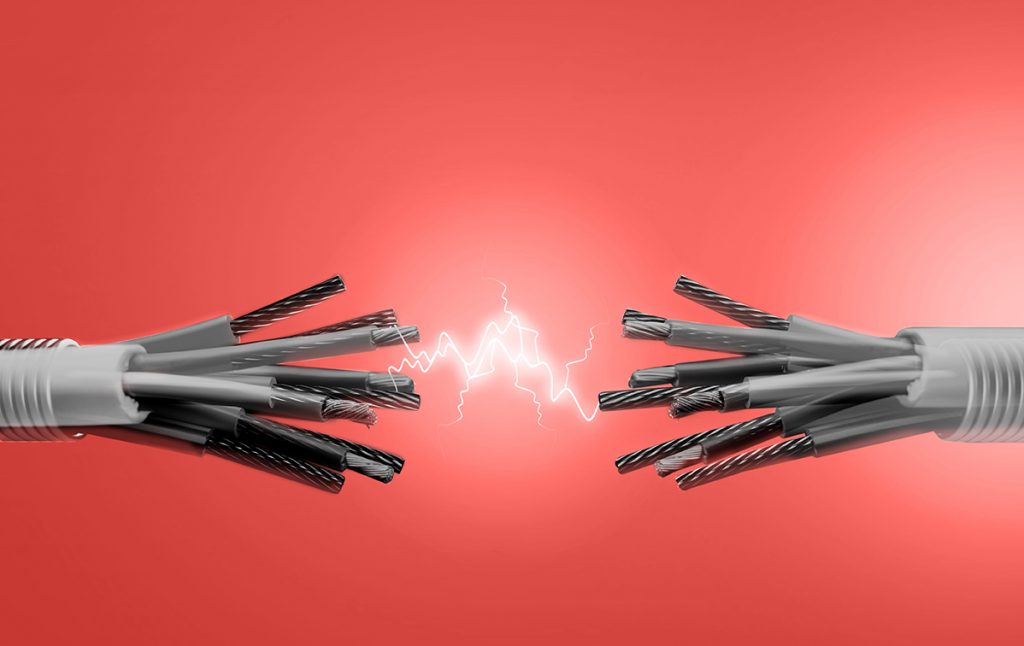
To Cut the Cord or Not Cut the Cord?
That is the question on a lot of Americans’ minds these days—especially now that most media companies are launching their own streaming service. Most recently, Apple and Disney have both added theirs to the ever-growing list, and there are a whole host of others that are set to launch in 2020, including HBO Max and NBC Universal’s Peacock.
If you haven’t already cut the cord, you might be thinking this is a good time to do so. And it is true that there has never been such a wide range of programming offerings that live outside a cable subscription.
Beware, though: Cutting the cord may not save you money, you may not be able to watch all the things you want to watch, and you may still be paying for a whole bunch of stuff you don’t watch. It all depends on what you’re looking for when you turn on your TV (or tablet, or other device on which you can stream video).
Here’s a rough guide to the advantages and disadvantages of cutting the cord.
How Much Does It Cost?
The big promise around cutting the cord over the last several years was “No more paying for content you don’t want.” If you were a cable subscriber who didn’t like sports, you were effectively forking several dollars a month for a bunch of channels you didn’t watch (i.e. ESPN and its associated networks).
But, now we know the truth: You’re always going to be paying for at least some content you don’t want. Think about how many evenings you spend scrolling past all sorts of shows and movies you’ll never watch on Netflix.
The typical consumer, however, only has so much money to spend on all these streaming services. That means you need to prioritize. Can you afford to subscribe to Netflix (from $8.99-15.99/mo), Amazon Prime (charged annually, approximately $10/month), HBO Now ($14.99/mo), and Hulu without ads ($11.99/mo)? Maybe you really want to watch Star Trek: Discovery on CBS All Access—that could be between $5.99-9.99 a month.
And those are just the big-tent streaming services, the ones with pretty deep libraries in addition to high-quality original series. If you’re a fan of horror, you may want to add on a more niche service like Shudder, for $4.99/mo. British and Australian shows? Acorn TV’s got you covered, for $5.99/mo. These are small expenses that add up, so choose carefully.
You can easily spend $60-$70 on streaming services alone. That doesn’t include what you pay your internet service provider for the high-speed internet you need to watch these services. (More on that below.)
Live or Not?
There are a number of live streaming services that are essentially skinny cable bundles: Sling TV ($20/mo for a basic package), YouTube TV ($49.99/mo), and Hulu + Live TV ($54.99/mo) all allow you to watch live TV in a way that feels similar to cable.
Whether you need to subscribe to a live TV service depends on your own priorities. If you’re a sports nut, then you’ll need something like Sling TV’s Orange package, which includes ESPN. Or you can subscribe to a league-specific streaming service like NBA League Pass ($17.99/mo).
That’s not to discount the best way to get live broadcast TV for free, as Americans have done since the dawn of TV itself: an antenna. An antenna will get you access to CBS, NBC, ABC, and Fox, in addition to a host of other local broadcasters. Many consumers also use satellite dish services such as Dish and DirecTV. The catch is that you’ll only be able to watch these channels live.
How Do You Get Your Content?
Cable occasionally has some hiccups when it comes to delivering your content, but internet speed and reliability is a bit more of a concern when you’re counting on streaming to deliver all your entertainment needs.
When cutting the cord, you may need to adjust your internet plan to keep the content flowing smoothly. Netflix needs a download speed of 5 Megabits per second (Mbps) at a bare minimum, and if you want to stream in 4K, you’ll need at least 25 Mbps. Also, keep in mind that some internet providers have data caps, or a limit on how much data you can use through your internet connection in a month. These caps can be easy to hit when you’ve got multiple people under one roof streaming HD video.
High-speed internet prices vary widely, but it’s safe to say you’ll be spending at least $60 per month.
One-Click Cancel: The Convenience of Streaming
So, when it comes to price, you’re not really saving much by subscribing to a bunch of streaming services. But there are two ways streaming services can offer more convenience than traditional cable.
First, they offer you a way to watch what you want when you want, untethering you from the scheduling of live TV (with the exception of sports). And, second, you can easily start and cancel the service whenever you want—no waiting for the cable guy for hours to install or pick up anything.
There is a bit of a catch when it comes to watching what you want, though. With so many disparate streaming services now, finding out what content is on which platform can be quite a chore. And if you don’t know exactly what you want to watch, you’re somewhat more likely to simply not bother watching anything—21% of people just give up when searching for something to watch, according to Nielsen.
Apple, for one, is attempting to fix the issue of “content discovery” by rolling up all your subscriptions into its Apple TV product, so you can see what’s available in one place. Industry observers say we’ll likely see more of this kind of re-bundling in the near future. Others with similar subscription aggregating devices include Amazon Fire TV and Roku.
More than 86 million households still subscribe to a traditional pay-TV service like cable or satellite, so if you decide to keep your cord intact, you’re not alone. And for those who want to put together their own non-cable package of movies and TV shows, there are plenty of options.
How Frontier fiber gig speed makes your streaming awesome
When you’re searching for the right internet service provider, check out Frontier. Not only will you find internet speeds up to a gigabit (and getting faster), but you’ll have the bandwidth you need so that more than one person at a time can stream content to different TVs or devices. Plus fiber is a great bonus when you’re not streaming, too. It’s best for lag free gaming, for smooth video calls and uploading huge files to the cloud. Ready to cut the cord? Check here to see if it’s available at your address.
And enjoy that content!




Join the conversation